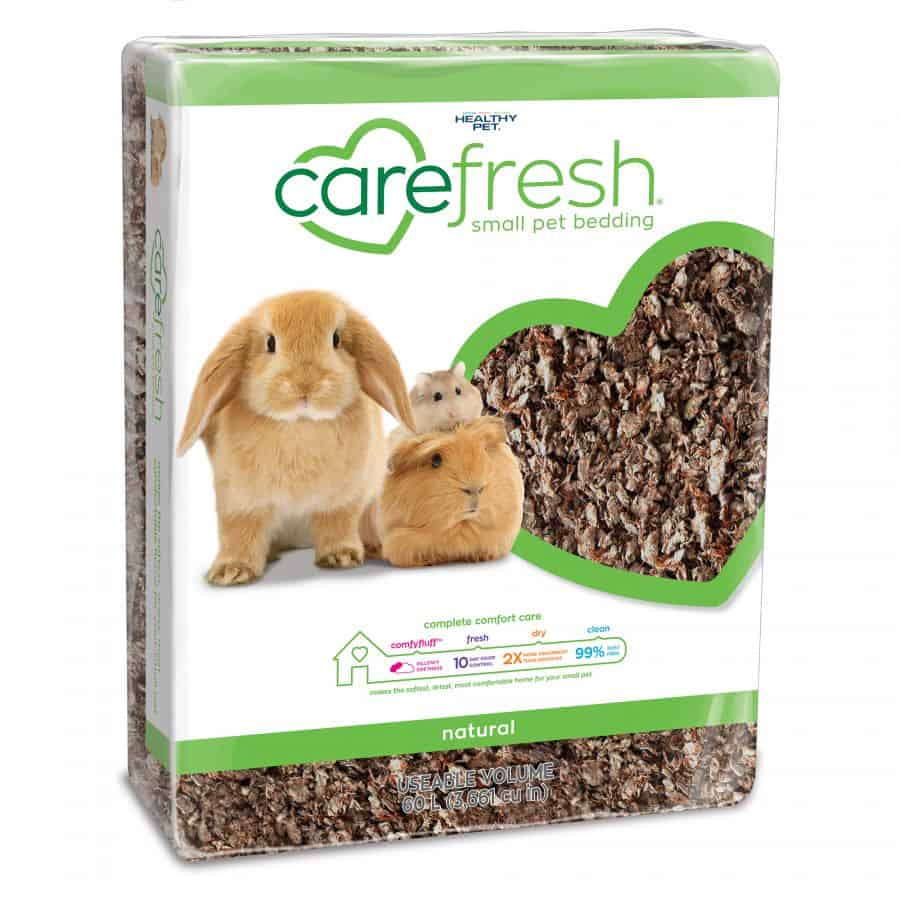Home DIY Hamster Cage Cleaner: Dangerous Chemicals to Avoid
Do you have a hamster? If so, then you know that they can be pretty messy creatures. One of the most important parts of having a pet hamster is keeping their cage clean for them. You want to make sure that your little one has plenty of room to run around and play in an environment where they are safe from any dangers. But what do you do when it’s time to clean their habitat?
There are many chemicals out there on the market that claim to be “safe” for animals but look closer at the label and see if it says anything about being appropriate for pets or not. Most cleaners aimed at animal habitats often contain harsh chemicals like ammonia which can cause serious damage – even death!
Let’s look at how to create your own DIY hamster cage cleaner at home that is safe and effective.

What is a hamster cage cleaner and why do I need one?
A cage cleaner is a special formulation that helps clean and disinfect cages, wheels, feeders, toys, food bowls, and all other parts of the habitat.
Our Pick For Best Hamster Bedding
Studies and research suggest that paper bedding is best for our hammies. The Carefresh natural paper bedding for small animals is our top pick to use, today.
What We Like:
- Natural paper bedding
- 99% dust free – Reduced cause of respiratory issues for hamsters and human in some cases.
- Up to 10 Days of ammonia odor control
- Good for tunneling and burrowing
- Reduced chance for cuts from sharp portions
- Good absorbency

Cleaners for hamster cages serve 4 purposes:
- Removing and breaking down urine, dirt, feces, etc.: a cleaner’s main purpose is to remove things your hamster leaves behind in their habitat, so you don’t have to touch it or smell it any longer than necessary.
- Reducing ammonia fumes: Cleaners may also help reduce the amount of ammonia that builds up when your hamster urinates (yes, they do as well!) by using enzymes that break down organic waste into less harmful substances such as water vapor and carbon dioxide – which can be smelled but not nearly as bad!
- Disinfecting the habitat: Your animal’s cage needs to stay clean for them to live healthy lives because dirty cages often contain bacteria from droppings and food, which can lead to illness in your hamster.
- Providing a pleasant scent: Lastly, but not least – the smell of some cleaners may be more pleasing for you and your pet than others, so make sure there is an option that suits both of you when it comes to choosing one!
DIY Hamster Cage Cleaner Recipe (all-natural)
One way to keep your hamster safe and happy is to use small pet-safe cleaning products. That starts by knowing exactly what is in the cleaner. (You can also use this formula with rabbits, rats, and guinea pigs)
Can I use vinegar to clean a hamster cage? Vinegar is a great option for cleaning your hamster cage. It contains acetic acid, a natural disinfectant, and an inexpensive, readily available, non-toxic way to clean up messes around the cage.
Here is a DIY hamster cage cleaner recipe that works well and is safe for your little hammy.
DIY Hamster Cage Cleaner (2:1 ratio)
- 4 oz. of warm (120F water)
- 2 oz. of white vinegar
- 2 drops of liquid dish soap
Mix the water, white vinegar, and dish soap into a reusable spray bottle. Close the bottle with the spray head and ensure the bottle is sealed well. Shake two times and use.
It is best to spray the entire surface to be cleaned and let the cleaner sit for 2-3 minutes and wipe the surface down with a towel. Then, re-apply the cleaner to all areas and more generously to more stains portions.
On this second application of the cleaner, allow it to sit for 10-15 minutes. Then spray a light coat one more time, scrub the area with a rag or paper towel and wipe up the excess.
Finally, rinse the cleaned area with clean water and then allow it to air dry.
Extra Strength DIY Hamster Cage Cleaner (1:1 ratio)
- 4 oz. of warm (120F water)
- 4 oz. of white vinegar
- 4-6 drops of liquid dish soap
Mix together the water, white vinegar, and dish soap into a reusable spray bottle. Close the bottle with the spray head and ensure the bottle is sealed well. Shake two times and use.
Using the spray bottle, spray the cleaner generously on the desired area and allow to sit for 10 minutes or more. Then, using a towel or rag, clean the area with a scrubbing motion. Re-apply the cleaner as needed.
When done, rinse the area thoroughly and allow it to dry completely.
Stain Buster DIY Hamster Cage Cleaner (1:1 ratio + Abrasive)
- 4 oz. of warm (120F water)
- 4 oz. of white vinegar
- 4-6 drops of liquid dish soap
- 1 tsp. of baking soda
Mix the water, white vinegar, baking soda, and dish soap into a reusable spray bottle. Close the bottle with the spray head and ensure the bottle is sealed. Shake gently until the baking soda is dissolved.
Spray the mixture generously onto the areas to be cleaned. Allow the mixture to sit for 3-5 minutes. Then begin cleaning the area with a toothbrush and paper towel or rag. When done cleaning, rinse the area well and allow it to dry thoroughly before placing your hamster into the cleaned cage.
This recipe cleans best while the water is still warm. Baking soda is a mild abrasive that can help remove stains.
Stubborn Stain Solver – Hamster Cage Cleaner
- 2 oz. of hydrogen peroxide
- 1 oz. of warm water (120F water)
- 4 drops of liquid dishwashing soap
Combine the hydrogen peroxide and water water into a spray bottle. Then add the liquid soap. Attach the cap and light turn the bottle over and back two times for a light mixing without creating a bunch of suds.
Spray the mixture generously on stubborn stains and let it sits for 10 minutes before rinsing throughly with clean water. Be sure to remove all soap residue before placing your hamster back into it’s cage.
DIY Cleaning Recipe Notes
It is important to thoroughly rinse the cleaner from the cage and accessories when you are finished cleaning.
If you can still smell the vinegar, it is going to be too much for your hamster. Wait for it to dry before placing your hamster back in the cage.
Finally, the only other issue you may run into is that these cleaners do not have an “instant” effect. It will take a little bit of time for the cleaner to work on all those urine stains and dirt and grime, but after a few cleanings, it should be as good as new!
Why you should avoid dangerous chemicals like bleach?
Many chemicals out there on the market claim to be “safe” for animals but look closer at them. For example, some cleaners aimed at animal habitats often contain harsh chemicals like ammonia which can cause serious damage – even death!
Bleach is harmful to hamsters because it can cause respiratory irritation and burning of the skin. Remember that hamsters are much more sensitive than humans. This includes smells and irritants.
You must read labels carefully for any chemicals or cleaning agents before spraying them around your pet!
Best hamster cage cleaners to buy
Maybe DIY is not your thing. No problem. There are reputable hamster cage cleaners on the market that are safe and effective.
In addition to avoiding the chemicals mentioned above, these cleaners are less likely to cause respiratory and skin irritation in small animals.
The following hamster cage cleaners have been reviewed favorably by both consumers and professionals:
Nature’s Miracle Cage Cleaner | Small Animal Formula – Nature’s Miracle Cage Cleaner for Small Animal is designed to clean small animal cages. Bio-enzymatic odor locking technology effectively removes tough, caked-on debris and strong, embedded cage odors with no perfume or essential oils left behind to irritate your hamster’s respiratory system.
Amazing Small Animal Cage Cleaner – A natural enzyme cage cleaner is extremely fast-acting and does not leave behind a greasy, sticky, or filmy residue like other cleaners or soaps. Apply the solution to a dirty hamster cage, let it sit for 15-30 minutes, then rinse thoroughly. The surface of the cage should be treated just like any hard floor – using a pet-safe cleaner to get rid of all dirt stains (including urine), grease, and food waste particles that can be potentially dangerous if ingested by your pets.
Benefits of using natural ingredients over harsh chemicals
When it comes to natural ingredients, it’s better for the environment since you’re not pouring harsh chemicals down a drain or spilling them on your counter. You’ll also save money because these cleaners are less expensive to make at home than chemical ones!
It is important not only for our hamsters but also for ourselves and other family members living on the same property to avoid inhaling strong fumes from chemical cleaners.
Another benefit of using natural ingredients is that the cage and accessories will not degrade as quickly as harsh chemical cleaners.
Summary
The benefits of using natural ingredients over harsh chemicals include affordability, environmentally friendly, and less harmful than chemical cleaners when animals in the vicinity.
You can make a hamster cage cleaner with warm water, vinegar, and liquid dishwashing detergent. It’s easy and safe when used properly.
Natural cage cleaners may not work as quickly as those with harsh chemicals, but the safety and benefits of the hamster environment are well worth it.
If you think your pet is ill, call a vet immediately. All health-related questions should be referred to your veterinarian. They can examine your pet, understand its health history, and make well informed recommendations for your pet.
903pets.com Staff


![How To Clean A Hamster Cage Step-by-Step [Schedule & Tips] 4 How To Clean A Hamster Cage Step-by-Step [Schedule & Tips]](https://cdn-0.903pets.com/ifywhoft/2022/03/Cleaning-a-hamster-cage-step-by-step-schedule-768x402.png)
![Are Hamster Wheels Safe? [How To Pick] 6 Are Hamster Wheels Safe? [How To Pick]](https://cdn-0.903pets.com/ifywhoft/2021/06/Are-Hamster-Wheels-Safe-768x402.jpg)
![How Big Do Hamsters Get - Sizes Of All 19 Major Breeds [Tables] 8 How Big Do Hamsters Get – Sizes Of All 19 Major Breeds [Tables]](https://cdn-0.903pets.com/ifywhoft/2021/06/Hamster-breed-size-chart.-How-big-do-hamsters-get-768x402.jpg)

